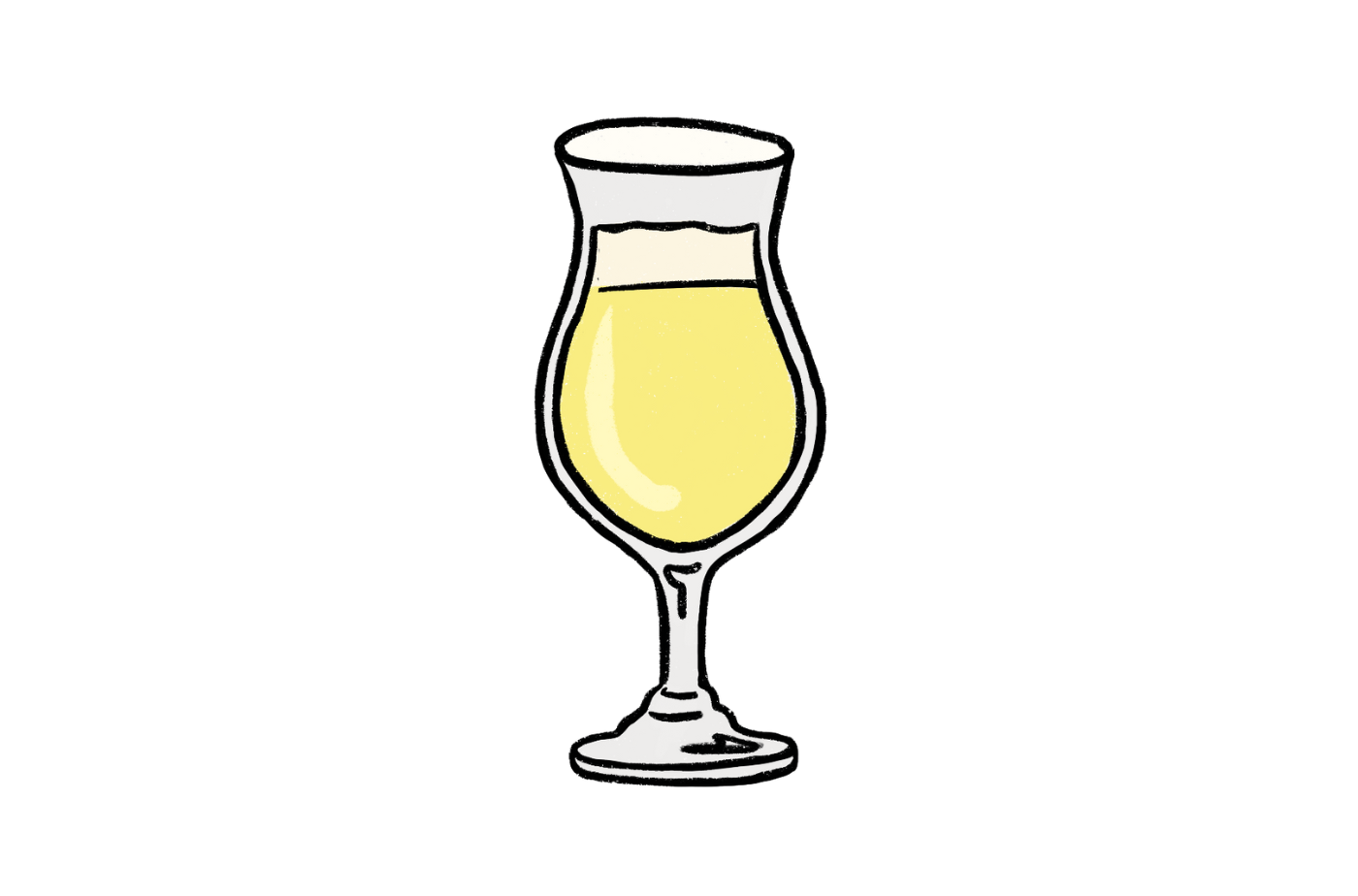

Ancient sour mishaps go vogue
So, what is it?--red
Theoretically, any beer that is intentionally made to be acidic is a sour beer. That’s because, while acidity is an integral part of beer's flavour, it’s not tart like, say, wine or cider. What’s more amazing is that 6000 years ago, ALL beer was likely sour! Thousands of years ago, at the dawn of brewing, beer was sour, largely due to poor brewery hygiene, allowing a zoo of yeasts and bacteria to flourish, including undesirable bacteria like Acetobacter and Enterobacter. To avoid beer tasting mouth-puckeringly acidic, brewers only brewed in cold weather (which slows down yeasts and bacteria growth) or used sweeteners and herbs to cover up the tart punch. In a modern era, of clean breweries, stainless steel tanks and a focus on microbiology, most beer is now clean and fresh, leaving only a handful of classically sour beers as a reminder of where we’ve come from. In particular, the European sour ales (including lambics, Berliner Weisse & Gose) are the icons of sour beer and are the basis for most modern styles, with varying levels of sourness and a whole kaleidoscope of styles and ingredients/methods. That’s the amazing thing about sour beer - more than just tart drinks, sour styles are some of the most complex of any brews!

What does Sour taste like?--aromatic
More than just face-wrenchingly acidic, the greatest sour beers are arguably some of the most complex brews on the planet. Acidity is such an interesting element with food, and many sours often have other ingredients (like fruit or spices) to add fruit as a contrasting flavour, so you have sour/sweet layers. Sour beers can also be exceptionally funky, with all sorts of earthen/mushroomy/nutty aromas and flavours in certain styles. Sours can also blur the lines between beer and other drinks, and there is even a fascinating beer/wine crossover beer category called ‘oenobeers’ that often go in a sour direction (thanks to wine’s naturally sky-high acidity). Regardless, sour beers will always taste sour! Sometimes, the raised acidity can make them taste more tart and fresh, like unripe fruit or even pineapples. Then, there is a more complex acidic tang that can feel like the mouthfeel of a very crisp white wine, right through to the punch of overripe, washed rind cheese!

Main styles it's known for?--cellar
Lambic - A classic Belgian sour style that is tart, light and refreshing. Lambics are most famously crafted using the additions of berries like cherry or raspberry and are kept in old barrels for a year (or more) to gain more complexity. You’ll also see the most traditional Lambics sealed with a cork like a wine bottle, especially the revered Gueuze style (called the Champagne of Brussels), made from a blend of new and old Lambic. Importantly, Lambic’s are fermented ambient yeast; so you’ll get some funk and a fair bit of batch variation. Interestingly enough, Lambics traditionally include up to 40% wheat (which makes the beers richer and more mouthfilling). Lambics are sour but usually crisp and refreshing (unlike the wilder Wild Ales), even in the fruitier versions, and can have real layers of flavour.

Flanders Ale - We’re in Belgium again, and it's a classic style of red/brown ale that with flavours picked up from extensive aging in large oak barrels. Unlike a Lambic, Flanders Ale is made with deliberate ‘mixed fermentation’ using brewer’s yeast and various combinations of bacteria like a brewer’s smorgasbord. Thanks to the dark malt used in the ferment, Flanders Ale styles are typically darker in colour, and often brewers use combinations of older and younger batches to make the most complex beers. Interestingly, Flanders Ales often have cherry, plum and raisin flavours that are not all that dissimilar to rich red wine!

Berliner Weisse - An increasingly popular style of German wheat beer made with Lactobacillus to add sourness, Berliner Weisse beers are typically cloudy but clean and tart. While more modern versions often include fruit to balance the sweetness, historically, Berliner Weisse-style beers were served with berry syrup on the side. Low in alcohol (2.5%-4%) and meant to be refreshing, Berliner Weisse was once the most popular drink in Germany but fell out of fashion in the 1950s. Now, Berliner Weisse is coming back again with some delicious iterations (and some amazing flavours). Importantly, Berliner Weisse is typically a very easygoing beer, with wheat, porridge and nutty flavours (but not hop bitterness) with a balanced sour tang and then typically juiciness from whatever fruit has been added.

Gose - Gose (goes-uh) is another sour beer style on the up and up, offering a very easy combination of tang and mouthfeel. Gose is effectively a German wheat beer made with coriander and salt, with Lactobacillus also used to add sourness. Like a Berliner Weisse, you’ll often see fruit or other sweeteners added to counter the acidity. Creamy, like a more classic wheat beer, but countered with sourness and then a little herbaceousness from the coriander. Ultimately gose works because you have the whole taste spectrum - sour, sweet, salty and creamy, all in one delicious beer!

Wild Ale - Beyond Lambic and other traditional Euro styles made using wild yeasts, there is a catch-all category for beers that use yeasts beyond just Saccharomyces (the standard brewing yeast) called ‘Wild Ale’. Technically speaking, not all Wild Ale styles are sour-tasting, but most have more than a little tang. Most importantly, there are no rules here, and some of the WIld Ale beers are really wild! Barnyard, nuts, horse blanket, and all the complex/challenging flavours that come from our friendly Brettanomyces yeast can be on show here, and oak aging is super popular to make for even more intrigue, but the Wild Ale flavour spectrum is enormous. Some of these beers are just a little acidic; others are next-level sour. Interesting beers are the winner here!

How is Sour beers made?--cork
Making sour beers is a real wild ride. Broadly speaking, there are two camps here, with the less funky sour styles are made using ‘good’ bacteria like Lactobacillus (which makes your yoghurt sour) or Pediococcus (used to preserve vegetables) to give sourness and traditional brewers yeast. Then, the more off-piste ‘wild’ styles of sour beer made with Brettanomyces (aka Brettm, the yeast that winemakers fear as it makes wine taste like bandaids) and other natural yeasts. However, the sour/wild genre is so dynamic that you can expect beers that use any combination! Sour beers can be lagers or ales but are more typically ales, which means they’re brewed using a top-fermenting yeast. Many brewers will also innoculate with their chosen yeast/bacteria and manage things very closely, including keeping their sour beer-making completely separate. Like natural winemaking, a pack of ambitious brewers now make beer without additions and simply let ferments happen naturally, like the ancient beer styles! That’s even more risky for beer than low-pH wine, especially when toying with Brettanomyces - which can make your beer smell like horse hair (or worse, horse poo), but it can produce profoundly complex beers (just like natural wine!). You’ll also see barrel aging in more serious sour styles for even more layers of flavour! Finally, some of the most popular sour beers include a fruit element to counter the pucker, using berries, tropical fruit (like mango), and generally anything juicy that can help mellow even the most eye-watering sour!
What foods should you be pairing it with Sour beer?--plum
Sour beers are some of the most pairing-friendly of any brews because you get such a range of contrasting flavours. Sweet, sour, salty, tangy, mouthfilling… you name it! Most of the time, you’ll want dishes with stronger flavours, however, especially when there is sweetness and sourness at play. A natural choice is to fight fire with fire and go for stinky and tangy cheeses with the more wild beers - blue cheese (Like a creamy but taut Gorgonzola), charismatic chevre (Holy Goat’s La Luna = yes) and washed rind (can’t beat a Munster or Époisses) are wonderful choices, especially with dried/fresh fruit on the side. Dishes based on cheese are a great rift on that theme, too, so blue cheese risotto or quiche can be a wonderful pair. Then, why stop at cheese when a whole antipasto plate is even more welcome? Cured meats, olives, and pickled veggies all work, plus the unheralded perfection of salt and vinegar chips (magic). Dishes with creamy and salty contrasts work nicely for less overt sour beers here, too, so fried fish or calamari, and for a little Belgian flavour, mussels in a creamy sauce (preferably with chips and mayonnaise).
Recipes to pair with Sour beer--pizza

One more thing about Sour beer--earth
A key reason why sour brewers use Brettanomyces is that standard brewer's yeast can’t actually ferment properly with more acidity. Saccharomyces starts to struggle in beer below pH 3.5, but ‘Brett’ will just keep fermenting, like a wild, tough guy of the yeast world!
About the Author:
Andrew Graham is a master winemaker and viticulturist (aka a grape guy) who fell into the wine industry as a teenager and never looked back! Voted the 23rd most trusted wine critic on the planet, Andrew judges at wine shows across the globe and runs foolishly long ultramarathons in his spare time (swiftly followed by a recuperative glass of wine or a frosty beer).
Do you know your wine personality? If your answer is no, take our quiz to find out which wines to pick up next and build your box!
Build my box





